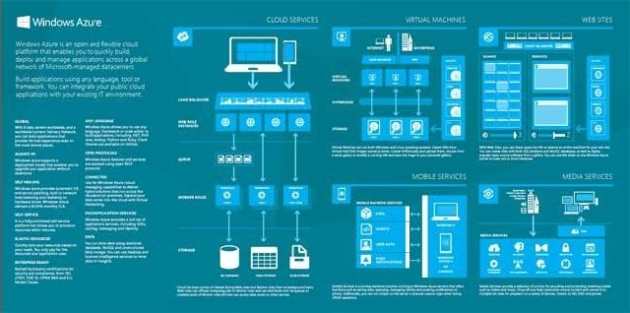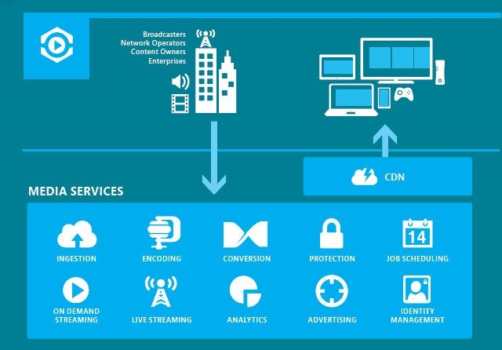Speaking of Azure, Media Services

Some time ago Microsoft published on its website an excellent infographic downloads where you could see all the services and capabilities regarding Cloud offers to MS users. This document is a quite dense and I will use it to go so understandable describing the features and technologies described.
In this chapter of the series I will try on Media Services , or multimedia services offered.
Media Services or Multimedia services for large broadcasting

While it took decades in power relay moving images through the television airwaves worldwide, creating along the way a dense network of space satellites, it could be said without doubt that the arrival of Digital transmissions can cover the entire globe with audiovisual transmissions.
Instead, Internet broadcasts, even much better in quality and performance, still require power infrastructure, bandwidth and very high costs . And who combines the hardware and software requirements needed for this type of service: The Cloud and in this specific case, the Media Services for Azure.
Since April of 2012 Azure presents the Media Services defines as follows:
Multimedia services offer the flexibility, scalability and reliability of a cloud platform, to a global audience enjoy a high quality multimedia experience.
Multimedia services include cloud-based versions of many existing technologies of Microsoft Media Platform and our media partners, including the introduction, coding, format conversion, and content protection functionality as both demand streaming live . Either to improve existing solutions to create new workflows, multimedia services can be combined easily to create and manage custom workflows to suit every need. “
Services offered by the platform
- Ingestion
This is the service that allows you to upload media to the Cloud. Since the files are very large, you can use the protocol UDP instead of HTTPS , to obtain a higher throughput, and allowing encrypt the content before it is uploaded via AES 256 bits of fulfilling the requirements safety. - Encoding
allows us to compress the video with different coded H.264, MPEG -1, MPEG -2, VC-1 and Windows Media Video. - Conversion
is the service that allows you to convert our video packages standard streaming formats like Smooth Streaming and Apple HTTP Live Streaming. - Content Protection
Azure provide DRM (Digital Rights Management) and content protection solution. Technologies currently DRM support Microsoft Play-ready Protection and Encryption Common MPEG . In the near future BuyDRM bear, EZDRM or Civolution. - ON-Demand Streaming
content encoded You can climb to the Cloud and configure virtual servers to broadcast via streaming material, either using the CDN of Azure or any other market as Akamai, Limeline, etc.
In summary, we have access to the necessary requirements to perform audiovisual broadcasts globally, as demonstrated in its intensive use for the London Olympics 2012.
Shortlink:

Recent Comments